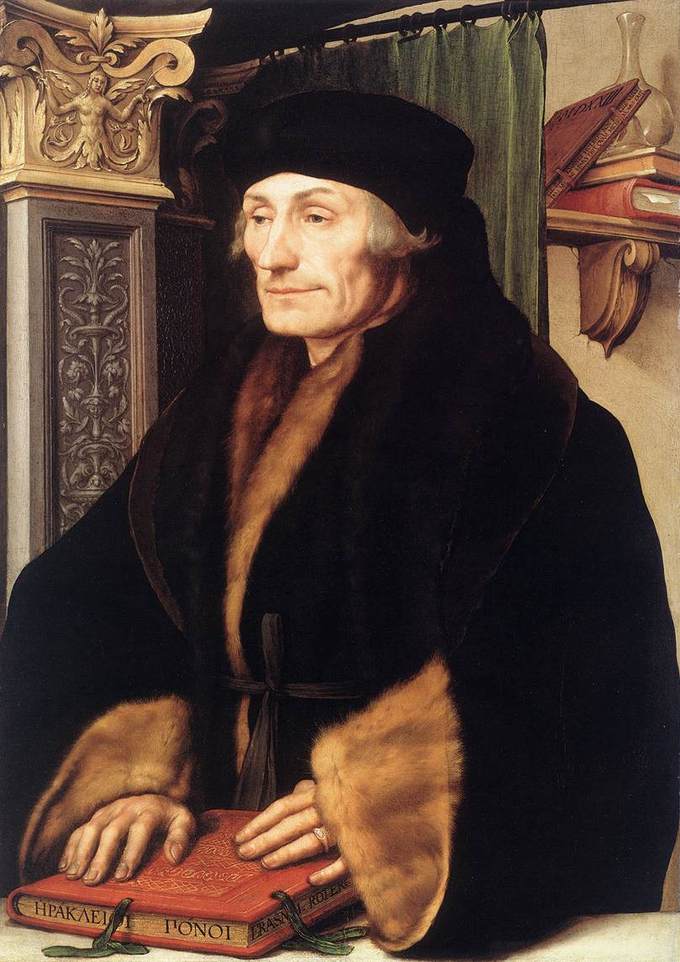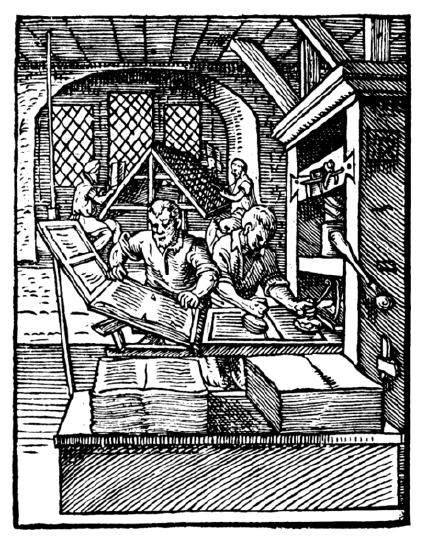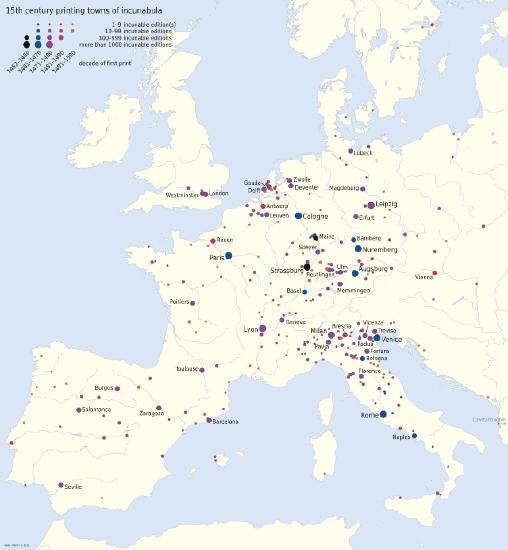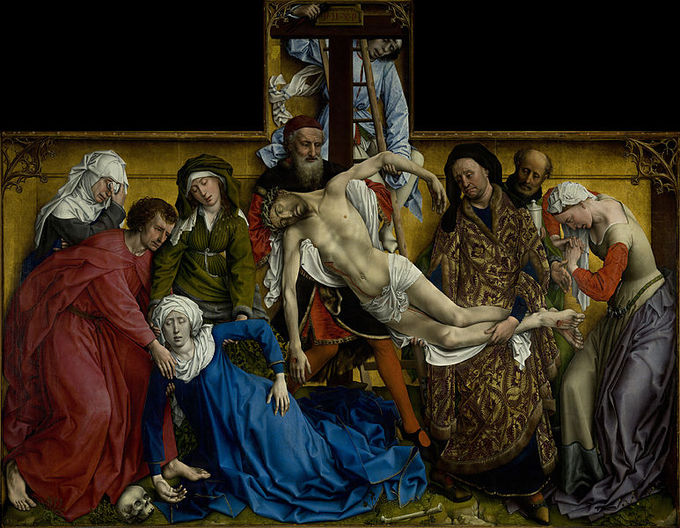17.6: The Northern Renaissance
- Page ID
- 91054
\( \newcommand{\vecs}[1]{\overset { \scriptstyle \rightharpoonup} {\mathbf{#1}} } \)
\( \newcommand{\vecd}[1]{\overset{-\!-\!\rightharpoonup}{\vphantom{a}\smash {#1}}} \)
\( \newcommand{\dsum}{\displaystyle\sum\limits} \)
\( \newcommand{\dint}{\displaystyle\int\limits} \)
\( \newcommand{\dlim}{\displaystyle\lim\limits} \)
\( \newcommand{\id}{\mathrm{id}}\) \( \newcommand{\Span}{\mathrm{span}}\)
( \newcommand{\kernel}{\mathrm{null}\,}\) \( \newcommand{\range}{\mathrm{range}\,}\)
\( \newcommand{\RealPart}{\mathrm{Re}}\) \( \newcommand{\ImaginaryPart}{\mathrm{Im}}\)
\( \newcommand{\Argument}{\mathrm{Arg}}\) \( \newcommand{\norm}[1]{\| #1 \|}\)
\( \newcommand{\inner}[2]{\langle #1, #2 \rangle}\)
\( \newcommand{\Span}{\mathrm{span}}\)
\( \newcommand{\id}{\mathrm{id}}\)
\( \newcommand{\Span}{\mathrm{span}}\)
\( \newcommand{\kernel}{\mathrm{null}\,}\)
\( \newcommand{\range}{\mathrm{range}\,}\)
\( \newcommand{\RealPart}{\mathrm{Re}}\)
\( \newcommand{\ImaginaryPart}{\mathrm{Im}}\)
\( \newcommand{\Argument}{\mathrm{Arg}}\)
\( \newcommand{\norm}[1]{\| #1 \|}\)
\( \newcommand{\inner}[2]{\langle #1, #2 \rangle}\)
\( \newcommand{\Span}{\mathrm{span}}\) \( \newcommand{\AA}{\unicode[.8,0]{x212B}}\)
\( \newcommand{\vectorA}[1]{\vec{#1}} % arrow\)
\( \newcommand{\vectorAt}[1]{\vec{\text{#1}}} % arrow\)
\( \newcommand{\vectorB}[1]{\overset { \scriptstyle \rightharpoonup} {\mathbf{#1}} } \)
\( \newcommand{\vectorC}[1]{\textbf{#1}} \)
\( \newcommand{\vectorD}[1]{\overrightarrow{#1}} \)
\( \newcommand{\vectorDt}[1]{\overrightarrow{\text{#1}}} \)
\( \newcommand{\vectE}[1]{\overset{-\!-\!\rightharpoonup}{\vphantom{a}\smash{\mathbf {#1}}}} \)
\( \newcommand{\vecs}[1]{\overset { \scriptstyle \rightharpoonup} {\mathbf{#1}} } \)
\( \newcommand{\vecd}[1]{\overset{-\!-\!\rightharpoonup}{\vphantom{a}\smash {#1}}} \)
\(\newcommand{\avec}{\mathbf a}\) \(\newcommand{\bvec}{\mathbf b}\) \(\newcommand{\cvec}{\mathbf c}\) \(\newcommand{\dvec}{\mathbf d}\) \(\newcommand{\dtil}{\widetilde{\mathbf d}}\) \(\newcommand{\evec}{\mathbf e}\) \(\newcommand{\fvec}{\mathbf f}\) \(\newcommand{\nvec}{\mathbf n}\) \(\newcommand{\pvec}{\mathbf p}\) \(\newcommand{\qvec}{\mathbf q}\) \(\newcommand{\svec}{\mathbf s}\) \(\newcommand{\tvec}{\mathbf t}\) \(\newcommand{\uvec}{\mathbf u}\) \(\newcommand{\vvec}{\mathbf v}\) \(\newcommand{\wvec}{\mathbf w}\) \(\newcommand{\xvec}{\mathbf x}\) \(\newcommand{\yvec}{\mathbf y}\) \(\newcommand{\zvec}{\mathbf z}\) \(\newcommand{\rvec}{\mathbf r}\) \(\newcommand{\mvec}{\mathbf m}\) \(\newcommand{\zerovec}{\mathbf 0}\) \(\newcommand{\onevec}{\mathbf 1}\) \(\newcommand{\real}{\mathbb R}\) \(\newcommand{\twovec}[2]{\left[\begin{array}{r}#1 \\ #2 \end{array}\right]}\) \(\newcommand{\ctwovec}[2]{\left[\begin{array}{c}#1 \\ #2 \end{array}\right]}\) \(\newcommand{\threevec}[3]{\left[\begin{array}{r}#1 \\ #2 \\ #3 \end{array}\right]}\) \(\newcommand{\cthreevec}[3]{\left[\begin{array}{c}#1 \\ #2 \\ #3 \end{array}\right]}\) \(\newcommand{\fourvec}[4]{\left[\begin{array}{r}#1 \\ #2 \\ #3 \\ #4 \end{array}\right]}\) \(\newcommand{\cfourvec}[4]{\left[\begin{array}{c}#1 \\ #2 \\ #3 \\ #4 \end{array}\right]}\) \(\newcommand{\fivevec}[5]{\left[\begin{array}{r}#1 \\ #2 \\ #3 \\ #4 \\ #5 \\ \end{array}\right]}\) \(\newcommand{\cfivevec}[5]{\left[\begin{array}{c}#1 \\ #2 \\ #3 \\ #4 \\ #5 \\ \end{array}\right]}\) \(\newcommand{\mattwo}[4]{\left[\begin{array}{rr}#1 \amp #2 \\ #3 \amp #4 \\ \end{array}\right]}\) \(\newcommand{\laspan}[1]{\text{Span}\{#1\}}\) \(\newcommand{\bcal}{\cal B}\) \(\newcommand{\ccal}{\cal C}\) \(\newcommand{\scal}{\cal S}\) \(\newcommand{\wcal}{\cal W}\) \(\newcommand{\ecal}{\cal E}\) \(\newcommand{\coords}[2]{\left\{#1\right\}_{#2}}\) \(\newcommand{\gray}[1]{\color{gray}{#1}}\) \(\newcommand{\lgray}[1]{\color{lightgray}{#1}}\) \(\newcommand{\rank}{\operatorname{rank}}\) \(\newcommand{\row}{\text{Row}}\) \(\newcommand{\col}{\text{Col}}\) \(\renewcommand{\row}{\text{Row}}\) \(\newcommand{\nul}{\text{Nul}}\) \(\newcommand{\var}{\text{Var}}\) \(\newcommand{\corr}{\text{corr}}\) \(\newcommand{\len}[1]{\left|#1\right|}\) \(\newcommand{\bbar}{\overline{\bvec}}\) \(\newcommand{\bhat}{\widehat{\bvec}}\) \(\newcommand{\bperp}{\bvec^\perp}\) \(\newcommand{\xhat}{\widehat{\xvec}}\) \(\newcommand{\vhat}{\widehat{\vvec}}\) \(\newcommand{\uhat}{\widehat{\uvec}}\) \(\newcommand{\what}{\widehat{\wvec}}\) \(\newcommand{\Sighat}{\widehat{\Sigma}}\) \(\newcommand{\lt}{<}\) \(\newcommand{\gt}{>}\) \(\newcommand{\amp}{&}\) \(\definecolor{fillinmathshade}{gray}{0.9}\)Erasmus
Erasmus of Rotterdam was a renowned Humanist scholar and theologian who wrote several important texts criticizing the superstition and formalism of the church while upholding its core spiritual values.
LEARNING OBJECTIVES
- Describe Erasmus and his connection to the Renaissance
KEY TAKEAWAYS
Key Points
- Erasmus was a Dutch Renaissance Humanist, Catholic priest, social critic, teacher, and theologian known as the “Prince of the Humanists” for his influential scholarship and writings.
- Erasmus lived against the backdrop of the growing European religious Reformation, but while he was critical of the abuses within the Catholic church and called for reform, he kept his distance from Luther and continued to recognize the authority of the pope.
- In The Handbook of the Christian Soldier, Erasmus outlines the views of the normal Christian life and critiques formalism—going through the motions of tradition without understanding their basis in the teachings of Christ.
- One of Erasmus’s best-known works is In Praise of Folly, a satirical attack on superstitions and other traditions of European society in general and the western church in particular.
Key Terms
- ecclesiastic: The theological study of the Christian church.
- satirical: Characteristic of a genre of literature in which vices, follies, abuses, and shortcomings are held up to ridicule, ideally with the intent of shaming individuals, groups, or society itself into improvement.
Overview
Erasmus of Rotterdam, or simply Erasmus, was a Dutch Renaissance Humanist, Catholic priest, social critic, teacher, and theologian.
Erasmus was a classical scholar and wrote in a pure Latin style. Among Humanists he enjoyed the name “Prince of the Humanists,” and has been called “the crowning glory of the Christian Humanists.” Using Humanist techniques for working on texts, he prepared important new Latin and Greek editions of the New Testament, which raised questions that would be influential in the Protestant Reformation and Catholic Counter-Reformation. He also wrote On Free Will, The Praise of Folly, Handbook of a Christian Knight, On Civility in Children, Copia: Foundations of the Abundant Style, Julius Exclusus, and many other works.
Erasmus lived against the backdrop of the growing European religious Reformation, but while he was critical of the abuses within the Catholic church and called for reform, he kept his distance from Luther and Melanchthon and continued to recognize the authority of the pope, emphasizing a middle path with a deep respect for traditional faith, piety, and grace, rejecting Luther’s emphasis on faith alone. Erasmus remained a member of the Roman Catholic church all his life, staying committed to reforming the church and its clerics’ abuses from within. He also held to the Catholic doctrine of free will, which some Reformers rejected in favor of the doctrine of predestination. His middle road (“Via Media“) approach disappointed and even angered scholars in both camps.
Approach to Scholarship
Erasmus preferred to live the life of an independent scholar and made a conscious effort to avoid any actions or formal ties that might inhibit his freedom of intellect and literary expression. Throughout his life, he was offered many positions of honor and profit throughout the academic world but declined them all, preferring the uncertain but sufficient rewards of independent literary activity.
His residence at Leuven, where he lectured at the university, exposed Erasmus to much criticism from those ascetics, academics, and clerics hostile to the principles of literary and religious reform and the loose norms of the Renaissance adherents to which he was devoting his life.
He tried to free the methods of scholarship from the rigidity and formalism of medieval traditions, but he was not satisfied with this. His revolt against certain forms of Christian monasticism and scholasticism was not based on doubts about the truth of doctrine, nor from hostility to the organization of the church itself, nor from rejection of celibacy or monastic lifestyles. He saw himself as a preacher of righteousness by an appeal to reason, applied frankly and without fear of the magisterium. He always intended to remain faithful to Catholic doctrine, and therefore was convinced he could frankly criticize virtually everyone and everything. Aloof from entangling obligations, Erasmus was the center of the literary movement of his time, corresponding with more than 500 men in the worlds of politics and thought.
Writings
Erasmus wrote both on ecclesiastic subjects and those of general human interest. By the 1530s, the writings of Erasmus accounted for ten to twenty percent of all book sales in Europe.
His serious writings begin early, with the Enchiridion militis Christiani—the Handbook of the Christian Soldier (1503). In this short work, Erasmus outlines the views of the normal Christian life, which he was to spend the rest of his days elaborating. The chief evil of the day, he says, is formalism—going through the motions of tradition without understanding their basis in the teachings of Christ. Forms can teach the soul how to worship God, or they may hide or quench the spirit. In his examination of the dangers of formalism, Erasmus discusses monasticism, saint worship, war, the spirit of class, and the foibles of “society.”
One of Erasmus’s best-known works is In Praise of Folly, a satirical attack on superstitions and other traditions of European society in general and the western church in particular, written in 1509. In Praise of Folly starts off with Folly praising herself, after the manner of the Greek satirist Lucian, whose work Erasmus and Sir Thomas More had recently translated into Latin, a piece of virtuoso foolery; it then takes a darker tone in a series of orations, as Folly praises self-deception and madness and moves to a satirical examination of pious but superstitious abuses of Catholic doctrine and corrupt practices in parts of the Roman Catholic church—to which Erasmus was ever faithful—and the folly of pedants. Erasmus had recently returned disappointed from Rome, where he had turned down offers of advancement in the curia, and Folly increasingly takes on Erasmus’s own chastising voice. The essay ends with a straightforward statement of Christian ideals.

The Printing Revolution
The invention of the printing press by Gutenberg led to the spread of mass communication across Europe in only a few decades.
LEARNING OBJECTIVES
- Synthesize the impacts of the printing press on distribution of ideas and mass communication
KEY TAKEAWAYS
Key Points
- In 1436 Johannes Gutenberg began work on the invention of a new printing press that allowed precise molding of new type blocks from a uniform template and allowed for the creation of high-quality printed books.
- Gutenberg is also credited with the introduction of an oil-based ink that was more durable than the previously used water-based inks. He tested colored inks in his Gutenberg Bible.
- The printing press was a factor in the establishment of a community of scientists who could easily communicate their discoveries through widely disseminated scholarly journals, helping to bring on the scientific revolution.
- Because the printing process ensured that the same information fell on the same pages, page numbering, tables of contents, and indices became common.
- The arrival of mechanical movable type printing introduced the era of mass communication, which permanently altered the structure of society. The relatively unrestricted circulation of information and revolutionary ideas transcended borders.
Key Terms
- Johannes Gutenberg: (c. 1395–1468) A German blacksmith, goldsmith, printer, and publisher who introduced printing to Europe. His invention of mechanical movable type printing started the Printing Revolution and is widely regarded as the most important event of the modern period.
- Gutenberg Bible: The first major book printed in the West using movable type. It marked the start of the age of the printed book in the West and is widely praised for its high aesthetic and artistic qualities.
Overview
The printing press was invented in the Holy Roman Empire by the German Johannes Gutenberg around 1440, based on existing screw presses. Gutenberg, a goldsmith by profession, developed a complete printing system that perfected the printing process through all of its stages by adapting existing technologies to printing purposes, as well as making groundbreaking inventions of his own. His newly devised hand mould made possible for the first time the precise and rapid creation of metal movable type in large quantities, a key element in the profitability of the whole printing enterprise.
The printing press spread within several decades to over 200 cities in a dozen European countries. By 1500, printing presses in operation throughout Western Europe had already produced more than 20 million volumes. In the 16th century, with presses spreading further afield, their output rose tenfold to an estimated 150 to 200 million copies. The operation of a press became so synonymous with the enterprise of printing that it lent its name to an entire new branch of media, the press.
Johannes Gutenberg
Johannes Gutenberg’s work on the printing press began in approximately 1436 when he partnered with Andreas Dritzehn—a man he had previously instructed in gem-cutting—and Andreas Heilmann, owner of a paper mill. However, it was not until a 1439 lawsuit against Gutenberg that an official record exists; witnesses’ testimony discussed Gutenberg’s types, an inventory of metals (including lead), and his type molds.

Having previously worked as a professional goldsmith, Gutenberg made skillful use of the knowledge of metals he had learned as a craftsman. He was the first to make type from an alloy of lead, tin, and antimony, which was critical for yielding durable type that produced high-quality printed books and proved to be much better-suited for printing than all other known materials. To create these lead types, Gutenberg used what is considered one of his most ingenious inventions, a special matrix enabling the quick and precise molding of new type blocks from a uniform template. His type case is estimated to have contained around 290 separate letter boxes, most of which were required for special characters, ligatures, punctuation marks, etc.
Mass Communication
In Renaissance Europe, the arrival of mechanical movable type printing introduced the era of mass communication, which permanently altered the structure of society. The relatively unrestricted circulation of information and (revolutionary) ideas transcended borders, captured the masses in the Reformation, and threatened the power of political and religious authorities; the sharp increase in literacy broke the monopoly of the literate elite on education and learning and bolstered the emerging middle class. Across Europe, the increasing cultural self-awareness of its peoples led to the rise of proto-nationalism, accelerated by the flowering of the European vernacular languages to the detriment of Latin’s status as lingua franca.
As early as 1480 there were printers active in 110 different places in Germany, Italy, France, Spain, the Netherlands, Belgium, Switzerland, England, Bohemia, and Poland. From that time on, it is assumed that “the printed book was in universal use in Europe.” By 1500, the printing presses in operation throughout Western Europe had already produced more than 20 million copies. In the following century, their output rose tenfold to an estimated 150 to 200 million copies.
The vast printing capacities meant that individual authors could now become true bestsellers; at least 750,000 copies of Erasmus’s works were sold during his lifetime alone (1469–1536). In the period from 1518 to 1524, the publication of books in Germany alone skyrocketed sevenfold; between 1518 and 1520, Luther’s tracts were distributed in 300,000 printed copies.

Effect on Scholarship and Literacy
The printing press was also a factor in the establishment of a community of scientists who could easily communicate their discoveries through widely disseminated scholarly journals, helping to bring on the scientific revolution. Because of the printing press, authorship became more meaningful and profitable. It was suddenly important who had said or written what, and what the precise formulation and time of composition was. This allowed the exact citing of references, producing the rule, “one author, one work (title), one piece of information.” Before, the author was less important, since a copy of Aristotle made in Paris would not be exactly identical to one made in Bologna. For many works prior to the printing press, the name of the author has been entirely lost.
Because the printing process ensured that the same information fell on the same pages, page numbering, tables of contents, and indices became common, though they previously had not been unknown. The process of reading also changed, gradually moving over several centuries from oral readings to silent, private reading. The wider availability of printed materials also led to a drastic rise in the adult literacy rate throughout Europe.
Printing on a Gutenberg press: A demonstration of how to print on a Gutenberg printing press.
Flemish Painting in the Northern Renaissance
The Flemish School refers to artists who were active in Flanders during the 15th and 16th centuries.
LEARNING OBJECTIVES
Compare the artistic advances seen in the works of Robern Campin, Jan van Eyck, and Rogier van der Weyden
KEY TAKEAWAYS
Key Points
- The three most prominent painters during this period, Jan van Eyck, Robert Campin, and Rogier van der Weyden, were known for making significant advances in illusionism, or the realistic and precise representation of people, space, and objects.
- The preferred subject matter of the Flemish School was typically religious in nature, and the majority of the work was presented as panels, usually in the form of diptychs or polyptychs.
- While the Italian Renaissance was based on rediscoveries of classical Greece and Rome, the Flemish school drew influence from the region’s Gothic past.
- Van Eyck is known for signing and dating his work “ALS IK KAN” (“AS I CAN”).
- Robert Campin has been identified with the signature “Master of Flemalle.”
- Because the Flemish masters used a workshop system, they were able to mass produce high-end panels for sale and export throughout Europe.
Key Terms
- illusionism: The realistic and precise representation of people, space, and objects.
- tempera: A type of painting where color pigments are mixed with a binder, usually egg. Tempera can also refers to the finished work of art itself.
- triptych: A picture or series of pictures painted on three tablets connected by hinges.
- polyptych: A work consisting of multiple painted or carved panels joined together, often with hinges.
The Flemish School
The Flemish School, which has also been called the Northern Renaissance, the Flemish Primitive School, and Early Netherlandish, refers to artists who were active in Flanders during the 15th and 16th centuries, especially in the cities of Bruges and Ghent. The three most prominent painters during this period—Jan van Eyck, Robert Campin, and Rogier van der Weyden—were known for making significant advances in illusionism, or the realistic and precise representation of people, space, and objects. The preferred subject matter of the Flemish School was typically religious in nature, but small portraits were common as well. The majority of this work was presented as either panels, single altarpieces, or more complex altarpieces, which were usually in the form of diptychs or polyptychs.
During the 15th and 16th centuries, the Low Countries became a political and artistic center focused around the cities of Bruges and Ghent. Because Flemish masters employed a workshop system, wherein craftsmen helped to complete their art, they were able to mass produce high-end panels for sale throughout Europe. The Flemish School emerged almost concurrently with the Italian Renaissance. However, while the Italian Renaissance was based on the rediscoveries of classical Greek and Roman culture, the Flemish school drew influence from the area’s Gothic past. These artists also experimented with oil paint earlier than their Italian Renaissance peers.
Robert Campin
Robert Campin, considered the first master of the Flemish School, has been identified with the signature “Master of Flemalle,” which appears on numerous works of art. Campin is known for producing highly realistic works, for making great use of perspective and shading, and for being one of the first artists to work with oil paint instead of tempera. One of his best known works, the Merode Altarpiece, is a triptych that depicts an Annunciation Scene. The Archangel Gabriel approaches Mary as she is reading in a room that is recognized as a typical middle class Flanders home. The work is highly realistic, and the objects throughout the painting conveyed recognizable, religious meaning to viewers at the time.

Jan Van Eyck
Jan van Eyck, a contemporary of Campin, is widely considered to be one of the most significant Northern European painters of the 15th century. He is known for signing and dating his work “ALS IK KAN” (“AS I CAN”). Signatures were not particularly customary during this time, but helped to secure his lasting reputation. Active in Bruges, and very popular within his own lifetime, van Eyck’s work was highly innovative and technical. It exhibited a masterful manipulation of oil paint and a high degree of realism. While van Eyck completed many famous paintings, perhaps his most famous is the Ghent Altarpiece, a commissioned polyptych from around 1432.

Rogier van der Weyden
Rogier van der Weyden is the last of the three most renowned Early Flemish painters. An apprentice under Robert Campin, van der Weyden exhibited many stylistic similarities, including the use of realism. Highly successful in his lifetime, his surviving works are mainly religious triptychs, altarpieces, and commissioned portraits. By the end of the 15th century, van der Weyden surpassed even van Eyck in popularity. Van der Weyden’s most well-known painting is The Descent From the Cross, circa 1435.

Licenses and Attributions
CC LICENSED CONTENT, SHARED PREVIOUSLY
- Curation and Revision. Provided by: Boundless.com. License: CC BY-SA: Attribution-ShareAlike
CC LICENSED CONTENT, SPECIFIC ATTRIBUTION
- Desiderius Erasmus. Provided by: Wikipedia. Located at: https://en.wikipedia.org/wiki/Desiderius_Erasmus. License: CC BY-SA: Attribution-ShareAlike
- Holbein-erasmus.jpg. Provided by: Wikipedia. Located at: https://en.wikipedia.org/wiki/Desiderius_Erasmus#/media/File:Holbein-erasmus.jpg. License: CC BY-SA: Attribution-ShareAlike
- Printing Press. Provided by: Wikipedia. Located at: http://en.wikipedia.org/wiki/Printing_press. License: CC BY-SA: Attribution-ShareAlike
- Johannes Gutenberg. Provided by: Wikipedia. Located at: http://en.wikipedia.org/wiki/Johannes_Gutenberg. License: CC BY-SA: Attribution-ShareAlike
- Gutenberg Bible. Provided by: Wikipedia. Located at: http://en.wikipedia.org/wiki/Gutenberg_Bible. License: CC BY-SA: Attribution-ShareAlike
- Incunable. Provided by: Wikipedia. Located at: http://en.wikipedia.org/wiki/Incunable. License: CC BY-SA: Attribution-ShareAlike
- Holbein-erasmus.jpg. Provided by: Wikipedia. Located at: https://en.wikipedia.org/wiki/Desiderius_Erasmus#/media/File:Holbein-erasmus.jpg. License: CC BY-SA: Attribution-ShareAlike
- Printer in 1568. Provided by: Wikipedia. Located at: http://en.wikipedia.org/wiki/File:Printer_in_1568-ce.png. License: Public Domain: No Known Copyright
- Printing towns incunabula. Provided by: Wikipedia. Located at: http://en.wikipedia.org/wiki/Global_spread_of_the_printing_press%23mediaviewer/File:Printing_towns_incunabula.svg. License: CC BY-SA: Attribution-ShareAlike
- Printing on a Gutenberg press. Located at: http://www.youtube.com/watch?v=ksLaBnZVRnM. License: Public Domain: No Known Copyright. License Terms: Standard YouTube license
- The Descent from the Cross (van der Weyden). Provided by: Wikipedia. Located at: https://en.wikipedia.org/wiki/The_Descent_from_the_Cross_(van_der_Weyden). License: CC BY-SA: Attribution-ShareAlike
- Dutch and Flemish Renaissance painting. Provided by: Wikipedia. Located at: http://en.wikipedia.org/wiki/Dutch_and_Flemish_Renaissance_painting. License: CC BY-SA: Attribution-ShareAlike
- Rogier van der Weyden. Provided by: Wikipedia. Located at: http://en.wikipedia.org/wiki/Rogier_van_der_Weyden. License: CC BY-SA: Attribution-ShareAlike
- Jan van Eyck. Provided by: Wikipedia. Located at: http://en.wikipedia.org/wiki/Jan_van_Eyck. License: CC BY-SA: Attribution-ShareAlike
- Early Netherlandish painting. Provided by: Wikipedia. Located at: http://en.wikipedia.org/wiki/Early_Netherlandish_painting. License: CC BY-SA: Attribution-ShareAlike
- Robert Campin. Provided by: Wikipedia. Located at: http://en.wikipedia.org/wiki/Robert_Campin. License: CC BY-SA: Attribution-ShareAlike
- Northern Renaissance. Provided by: Wikipedia. Located at: http://en.wikipedia.org/wiki/Northern_Renaissance. License: CC BY-SA: Attribution-ShareAlike
- The Northern Renaissance. Provided by: Saylor. Located at: http://www.saylor.org/site/wp-content/uploads/2012/08/HIST302-8.3.1-Northern-Renaissance-FINAL.pdf. License: CC BY: Attribution
- ARTH111: Introduction to Western Art History - Proto-Renaissance to Contemporary Art. Provided by: Saylor. Located at: https://legacy.saylor.org/arth111/Intro/. License: CC BY: Attribution
- tempera. Provided by: Wiktionary. Located at: http://en.wiktionary.org/wiki/tempera. License: CC BY-SA: Attribution-ShareAlike
- triptych. Provided by: Wiktionary. Located at: http://en.wiktionary.org/wiki/triptych. License: CC BY-SA: Attribution-ShareAlike
- polyptych. Provided by: Wiktionary. Located at: http://en.wiktionary.org/wiki/polyptych. License: CC BY-SA: Attribution-ShareAlike
- Holbein-erasmus.jpg. Provided by: Wikipedia. Located at: https://en.wikipedia.org/wiki/Desiderius_Erasmus#/media/File:Holbein-erasmus.jpg. License: CC BY-SA: Attribution-ShareAlike
- Printer in 1568. Provided by: Wikipedia. Located at: http://en.wikipedia.org/wiki/File:Printer_in_1568-ce.png. License: Public Domain: No Known Copyright
- Printing towns incunabula. Provided by: Wikipedia. Located at: http://en.wikipedia.org/wiki/Global_spread_of_the_printing_press%23mediaviewer/File:Printing_towns_incunabula.svg. License: CC BY-SA: Attribution-ShareAlike
- Printing on a Gutenberg press. Located at: http://www.youtube.com/watch?v=ksLaBnZVRnM. License: Public Domain: No Known Copyright. License Terms: Standard YouTube license
- El Descendimiento, by Rogier van der Weyden, from Prado in Google Earth. Provided by: Wikipedia. Located at: http://en.wikipedia.org/wiki/File:El_Descendimiento,_by_Rogier_van_der_Weyden,_from_Prado_in_Google_Earth.jpg. License: Public Domain: No Known Copyright
- Merodealtarpiece. Provided by: Wikipedia. Located at: http://en.wikipedia.org/wiki/File:Merodealtarpiece.jpg. License: Public Domain: No Known Copyright
- Lamgods open. Provided by: Wikipedia. Located at: http://en.wikipedia.org/wiki/File:Lamgods_open.jpg. License: CC BY-SA: Attribution-ShareAlike

